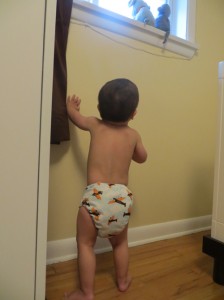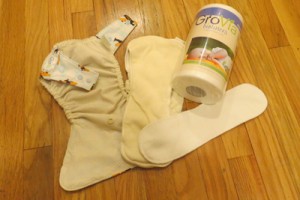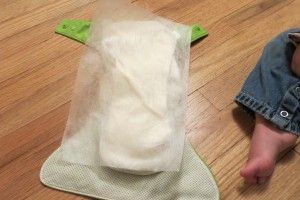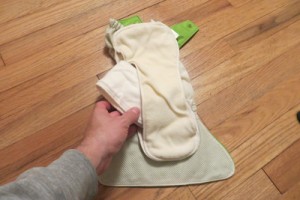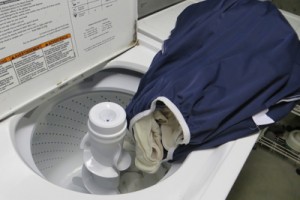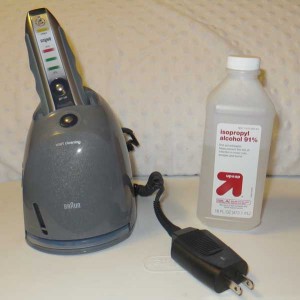Changing your mindset is the key to maximizing your vacation savings
One of the hardest things about living in Seattle is that the winters can be long. The weeks between the day we win the Superbowl to when the tree pollen traps us indoors can be the longest, most depressing weeks of the year. Rainy season here (really more of a nonstop, grey drippiness than real rain) lasts from around late October until July 5 in a typical year.That’s why we usually plan a vacation to somewhere warm and sunny in late February or March. When we return, we’re usually safely into springtime and ready for a glorious Seattle summer.
We were particularly nervous this year because it was going to be our first trip traveling with a toddler. Would we be the embarrassed parents trying to quiet a screaming child? What if there was a major poop explosion? We packed SO many toys, loaded our iPads with movies and brought along enough food to keep the entire plane fed for a month. We were ready. We thought.
It started off well enough, Pretired Baby had a blast running around in the airport and was already looking tired by the time he got on the plane. He was fascinated by the magazines, the windows, the tray table and all the other people. About two hours in, though, he drank a bunch of milk and laid down on our laps and fell asleep. He slept for a blissful 40 minutes or so and we even took his picture because he was sleeping so sweetly. We couldn’t believe our luck.
Suddenly he awoke with a kind of coughing noise, tried to sit up and started puking ALL OVER Pretired Mama.
“Lean him forward!” I shouted and he puked some more. He’s only thrown up one other time in his whole life and that was such a small amount it barely counted. He was scared and obviously didn’t feel well. He began crying loudly. I called the flight attendant who brought bags and paper towels but there wasn’t much else we could do. We managed to clean him up and calm him as best we could. He was finally quiet and cuddly but still feeling sick. Time remaining: about three hours of hell. Uh oh.
Over the next three hours, he puked.
And puked.
And puked.
The faces of the most annoyed and angry people, frustrated at having a screaming baby on their flight, eventually softened to sympathy and finally open pity or even horror. It may have been the worst flight of their lives, but, hey, were THEY the ones covered in puke?
We let everyone else get off the plane and finally shuffled off the plane, carrying our luggage, a toddler and two large garbage bags full of puke-covered clothes and other items. Did I mention there was a lot of puke? OK, good.
We decided to stop by the urgent care on the way to our condo just in case and almost died on the way. Pretired Baby started puking while we were driving but since he was slightly leaned back in the car seat he was having trouble getting it out. I was sitting in the back seat with him and told my wife to quickly pull over so I could loosen his seat and lean him forward a little bit. She pulled over and I unbuckled the top clip and leaned him forward a little bit and caught the puke in my already covered shirt I’d removed at the airport — the last thing I had with me for collecting puke. My wife suddenly gasped and I turned my head to look out the back window. A car was coming toward us fast — in the shoulder and obviously not seeing us. It fortunately swerved back into the traffic lane at the last second. If it had hit us, at least two of us would have been killed and one of them would definitely have been Pretired Baby, in his car seat with the car seat clip unbuckled.
Anyway, crisis averted, we made it to the doctor (who had no idea what was wrong and just gave us advice for treating nausea and thought it might be altitude sickness) and finally to our condo. Pretired Baby had a rough evening, but he eventually fell asleep on me and slept all night. The next day took him awhile to bounce back, but the day after that he was fine — which is when I came down with the same bug. It took me down for a night and the better part of a day, after which vacation finally started. At least we knew it wasn’t altitude sickness then, which meant the flight home should be better.
Why it’s worth trying to save money on vacation
A plane trip like that is a good reminder that plane travel — even when everything goes great — is a horrible experience. Even the best trips are an endurance test while the worst trips leave you wondering why you spent good money on such misery.
Fortunately our trip was very inexpensive. We had plenty of miles for our plane tickets and Pretired Baby traveled free as a puking lap baby. The suckage that is airplane travel is actually lessened quite a bit by knowing it was free or close to it.
The other reason to try to save money on vacation is that it can be quite expensive. You already have lodging — although that can also be free or close to it as well — you have food costs, which can be quite a bit if you eat out throughout the trip, you might need a rental car and you’ll likely spend some money on some sort of activities once you get there as well. It all adds up. A small family taking just two trips a year could easily drop $10,000 or more just on travel — that’s almost half of our core operating costs for the year! If you want to keep that up while paying out of pocket for everything, you might need twice the pretirement fund you were aiming for.
How to save money on vacation: shift your mindset
Since I already mentioned that we traveled to Maui with miles, you’re probably assuming that I’m going to start talking about travel rewards cards, card churning and other strategies that others have written about much more eloquently than me.
And while I AM advocating using rewards credit cards, what I really want to explain is an important mindset shift that my family has recently undergone.
You see, we’ve traveled ALL OVER this lovely planet, generally paying very little for the tickets that got us there, thanks to having accumulated many airline points. But we could have spent even less.
Most people, I think, are like us. Yes, they have rewards cards and yes, they build up over time with normal usage. So when we think about taking a trip, we get most of the trip planned and then finally we’ll say “Hey, do we have enough miles to pay for that?” Sometimes the answer is no and we’ll pay out of pocket. More likely, though, we’ll be just a little short and we’ll buy a few miles to get us over the top.
So we’ve shifted our thinking completely. Instead of planning a trip and then seeing if we have any miles we can use, we are planning our trips first and STRATEGICALLY building up miles toward each trip. And the biggest key to that, beyond planning farther ahead than we normally would, is to focus on sign-up bonuses vs. earning points over time. The sign-up bonuses require a certain amount of spending in the first few months so it’s critical to pay attention to the details.
It’s worth getting help
Getting organized on strategic rewards credit card usage can help you save money on vacation, but it’s an overwhelming world of intentionally confusing marketing. That’s why I enlisted the help of my friend Brad from Richmond Savers to help me sort through this mess. Brad offers free travel rewards coaching. All he asks in return is you sign up through his affiliate links and he then gets a small commission from the credit card companies.
We started by doing some thinking about the trips we wanted to take over the next few years. Here’s what we’re thinking right now:
- 2015: Hawaii again, but probably Kauai this time. I think we like it better. Its laid-back vibe fits our personalities better than Maui.
- 2016: Disneyland. We’re planning a joint trip with my brother’s family. I guess it’s one of those trips that’s unavoidable when you have kids.
- 2017: Scandinavia: I’ll be turning 50 (really?) so we want to go visit the motherland to celebrate.
- 2018: Italy: My wife wants to go to Tuscany when she turns 40. If all goes well, we may also be celebrating her pretirement!
It is generally a good idea to start with the trip coming up the soonest so we’re focused on building up enough miles for next year’s trip to Kauai. The way we’re doing this is via the British Airways rewards card, which gives us 50,000 miles. My wife signed up first and I think we’ve already got enough spending on the card to receive our points. Next, I’ll be signing up for the same card and getting the same points.
Once we have those banked, we’ll move on to the next card in our plan and keep going until all our trips are covered. It actually looks like we can pretty much get ALL of our needed plane tickets for nearly free with just our normal spending. We also have some spending we need to do on the house this summer so we’re going to try to time that work with the new card signups to maximize our signup rewards.
On top of that, we should be able to leverage rewards to gain big discounts with Disneyland and we’re even looking at some strategies for getting free hotel stays in Europe when the time comes. While we would have probably gotten most of our plane travel free or greatly reduced with our other points programs, by planning ahead and targeting the card usage at specific trips is the key to maximizing our vacation savings.
Other ways to save money on vacation
So now that you’ve hopefully joined me on my mindset shift and are now targeting rewards credit card spending toward specific trips, I’ll also share some of my other favorite tips for saving money on vacation.
- Consider VRBO rentals instead of traditional hotels. Obviously you can’t apply rewards points toward private vacation rentals, but if you’re not using points anyway, choose a vacation rental. We use VRBO for at least 80 percent of our trips these days. Mainly because these private homes are usually better set up for traveling with a child. There are usually separate rooms and full kitchens, etc. Even if you only eat in for breakfast and go out for all your other meals can add up to a lot of savings.
- Book your hotel first. For some reason travelers OBSESS over airline costs. There must be some weird psychology going on where people just cannot handle paying $10 more than the person sitting next to them because people will go through all kinds of maneuvers to save a little bit on plane tickets. Meanwhile they’ll often overpay for hotels on the same trip and not give it a second thought. What you need to know is that there is NO cancellation fee for most hotel bookings but there almost always is for airline travel. You can reserve your hotel stay first and then start looking for airline deals. If you find you need to adjust your stay a little bit, go ahead and make the changes then call the hotel and change your reservation. Hotel prices also fluctuate quite a bit just like airline prices. But if you see a better deal on a hotel than the one you already have, you can simple call and get the same deal. (We have had to cancel and rebook before, but it’s never been a problem.)
- And just for fun, one of the ways we saved a little bit on this trip was to utilize the local library. In Maui you can get a temporary library card for $10 so we were able to load up on books (they also rent DVDs) and keep Pretired Baby entertained without packing a bunch of heavy books or buying a bunch when we got there. They also had a free storytime for toddlers so he was able to go to that also for free. I do love libraries!
I’ll share some other tips for saving money on travel in the coming days, but in the meantime, what are some of your favorite tips for saving money on vacation?



